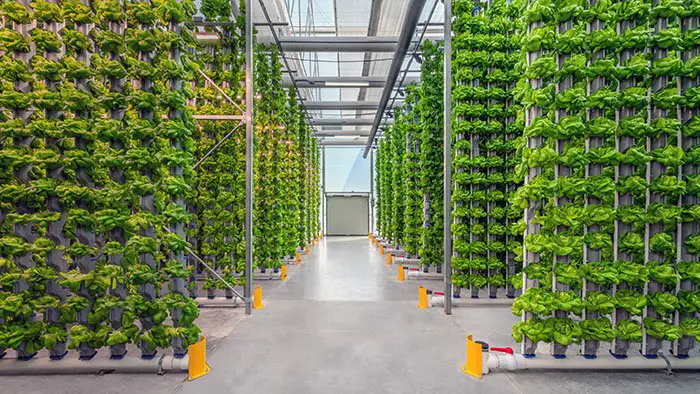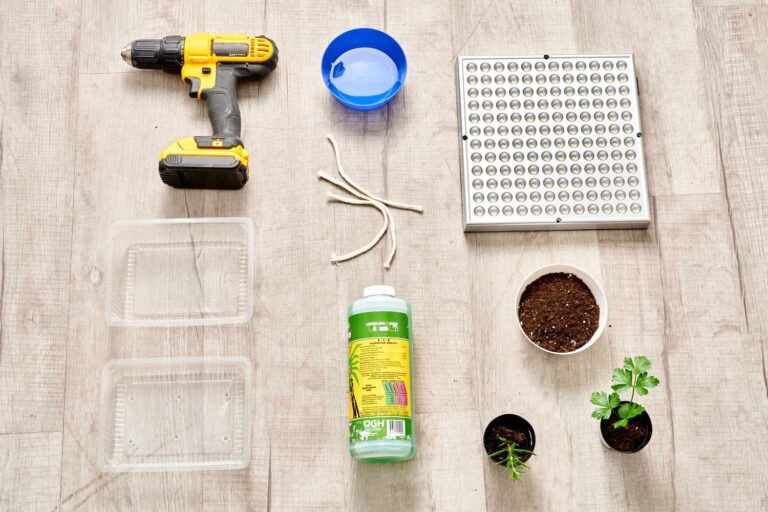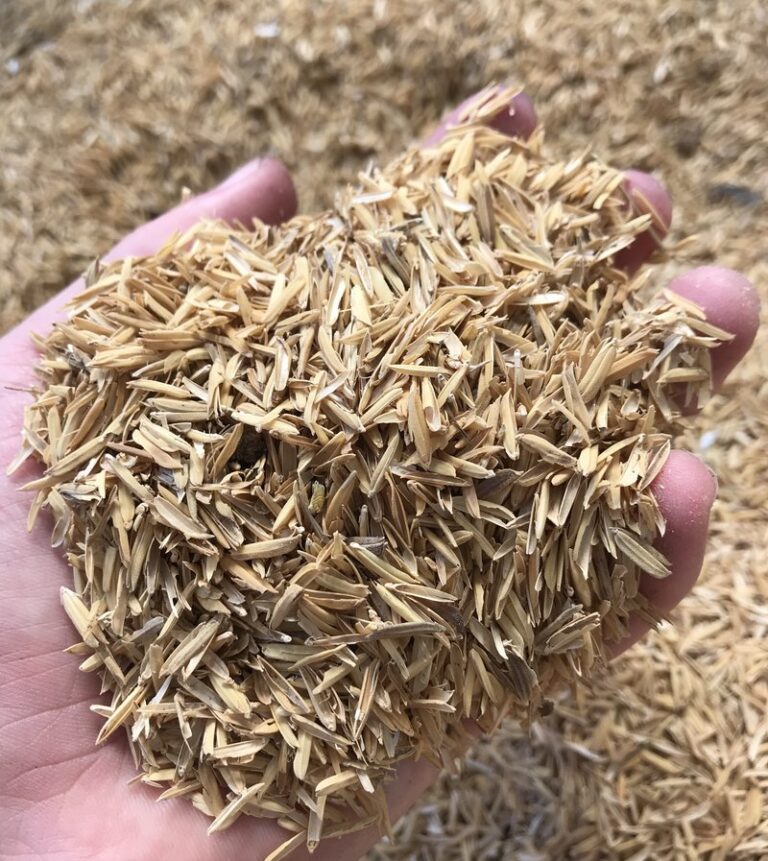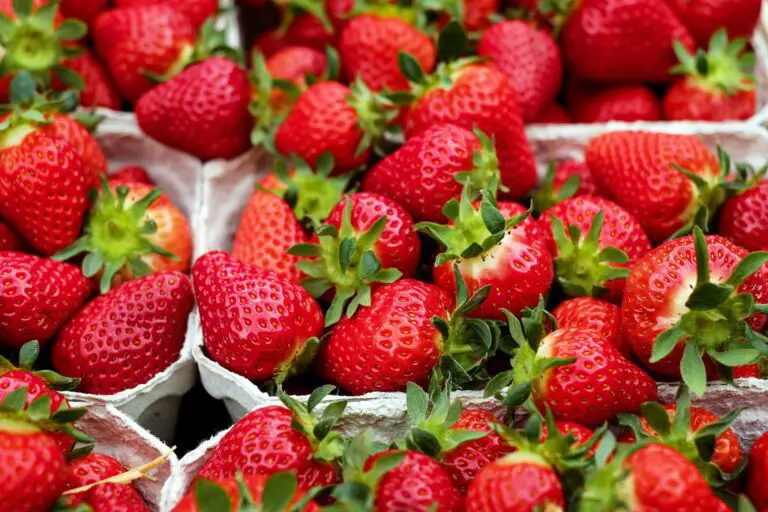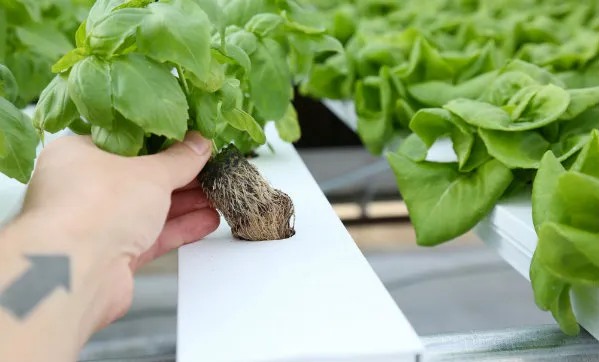Biodegradable Hydroponics: 11 Eco-Friendly Resources You Can Use
Table of Contents
Understanding the Concept of Biodegradable Hydroponics
Biodegradable hydroponics is a groundbreaking concept that combines the principles of hydroponics with sustainable materials and practices. Unlike traditional hydroponics, which rely on synthetic and non-renewable materials, biodegradable hydroponics utilizes organic and eco-friendly components, minimizing its environmental impact.
One of the key elements in biodegradable hydroponics is the use of sustainable growing mediums. Instead of relying on peat moss or rockwool, which are known to have negative environmental effects, biodegradable hydroponics incorporates materials such as coconut coir, rice hulls, or even bio-plastics derived from plants. These mediums not only provide support and aeration for plant roots, but eventually break down into organic matter, enriching the soil and reducing waste. By adopting biodegradable growing mediums, hydroponic systems become more environmentally friendly and promote long-term sustainability.
Another crucial aspect of biodegradable hydroponics is the utilization of organic nutrients. Instead of relying on synthetic fertilizers, which often contain harmful chemicals, organic nutrients derived from natural sources like compost, kelp extract, or worm castings are used in this approach. These organic nutrients not only provide essential macronutrients and micronutrients for plant growth but also enhance soil health and promote beneficial microbial activity. By minimizing the use of chemical-based fertilizers, biodegradable hydroponics offers a greener alternative that aligns with eco-friendly principles.
Overall, understanding the concept of biodegradable hydroponics opens up a whole new dimension in sustainable gardening. By embracing organic growing mediums and organic nutrients, gardening enthusiasts can significantly reduce their environmental impact while still enjoying the benefits of hydroponic cultivation. In the following sections, we will explore the various benefits and applications of biodegradable hydroponics, shedding light on its potential as a game-changer in the agricultural industry.

Exploring the Benefits of Biodegradable Hydroponics Systems
Biodegradable hydroponics systems offer numerous benefits that make them a compelling option for gardening enthusiasts. Firstly, these systems contribute to environmental sustainability by minimizing the use of non-biodegradable materials that can lead to pollution and waste accumulation. Unlike traditional hydroponics setups that utilize plastic containers and synthetic growing mediums, biodegradable hydroponic systems employ sustainable materials that naturally break down over time.
In addition to their eco-friendliness, biodegradable hydroponics systems also promote healthier plant growth. The use of organic nutrients in these systems ensures that plants receive essential vitamins, minerals, and beneficial microorganisms, resulting in stronger root development and improved overall plant health. This ultimately translates to higher crop yields and better quality produce.
By embracing biodegradable hydroponics systems, gardening enthusiasts can take a significant step towards sustainable and environmentally-conscious practices while reaping the benefits of robust plant growth.
A Brief Overview of Hydroponics and its Environmental Impact
Hydroponics, a method of growing plants without soil, has gained significant attention in recent years due to its environmental impact and potential benefits. By providing plants with the necessary nutrients directly in water-based solutions, hydroponics eliminates the need for traditional soil-based agriculture, which often requires large amounts of water and can lead to soil degradation.
One of the key environmental benefits of hydroponics is its water efficiency. Traditional agriculture consumes vast quantities of water, much of which is lost through evaporation or runoff. In contrast, hydroponics systems use up to 90% less water, making them a more sustainable option in regions suffering from water scarcity. Additionally, hydroponics allows for the recycling and reuse of water, further reducing its environmental impact.
Furthermore, hydroponics has the potential to minimize the use of pesticides and fertilizers, which can contaminate soil, waterways, and contribute to air pollution. With precise control over nutrient solutions, hydroponic systems can provide plants with optimal nutrition, reducing the need for chemical additives. As a result, hydroponics offers a more environmentally friendly alternative to traditional agriculture, with the potential to reduce the negative impacts on ecosystems and human health.
(Hydroponics Water Efficiency Table)
| Aspect | Hydroponics | Traditional Agriculture |
|---|---|---|
| Water Consumption | Generally uses less water as it’s recirculated within the system. | Higher water usage, with irrigation often leading to runoff. |
| Efficiency | Highly efficient as water is directly delivered to plants’ roots. | Less efficient, with water often being dispersed over a larger area. |
| Nutrient Management | Precise control over nutrient delivery, minimizing waste. | Nutrient runoff can lead to water pollution and waste. |
| Environmental Impact | Reduced environmental impact due to minimized runoff and efficient use. | Higher environmental impact due to runoff and resource-intensive practices. |
| Water Quality | Better water quality control, reducing the risk of contamination. | Susceptible to contamination from pesticides and fertilizers. |
Introducing Sustainable Materials for Biodegradable Hydroponics
Hydroponics, a method of growing plants without soil, has gained popularity due to its numerous benefits. One such benefit is the ability to use sustainable materials in biodegradable hydroponic systems. By utilizing environmentally friendly materials, we can further reduce our impact on the planet and promote a more sustainable approach to agriculture.
One key aspect of sustainable materials in biodegradable hydroponics is the choice of growing medium. Traditionally, hydroponic systems have utilized materials such as rockwool or perlite as the growing medium. However, these materials are not biodegradable and can contribute to waste accumulation. Thankfully, alternative options are now available. Coconut coir, for example, is a byproduct of the coconut industry and provides an excellent biodegradable alternative to traditional growing mediums. Its high water retention capacity and nutrient availability make it an ideal choice for hydroponic systems.
Another sustainable material that can be incorporated into biodegradable hydroponics is bamboo. Known for its rapid growth and renewability, bamboo can be used for constructing various elements of a hydroponic system, such as trellises or support structures. By incorporating bamboo into the system, we can reduce our reliance on traditional materials such as plastic or metal, which have a significant environmental impact during production and disposal.
| Sustainable Material | Application | Benefits |
|---|---|---|
| Coconut Coir | Growing Medium | Sustainable and biodegradable alternative to traditional mediums like rockwool or perlite. |
| Bamboo | Construction of System Elements | Reduces reliance on plastic or metal materials, providing a more eco-friendly option for building hydroponic systems. |
| Overall Sustainability | Ecological Footprint Reduction | Introducing sustainable materials minimizes the ecological footprint of biodegradable hydroponic systems. |
| Conscious Material Choices | Environmental Responsibility | Making conscious choices with materials promotes a holistic and environmentally responsible approach to gardening. |
| Contribution to Future | Sustainable Agricultural Practices | Sustainable materials contribute to a more eco-friendly future for hydroponics and support innovative agricultural practices. |

Utilizing Organic Nutrients for Eco-Friendly Hydroponic Solutions
Utilizing organic nutrients in hydroponic systems is a crucial step towards creating eco-friendly and sustainable solutions for gardening enthusiasts. The concept of organic nutrients revolves around using natural and plant-based substances that provide essential elements for optimal plant growth. By excluding synthetic chemicals and embracing organic alternatives, hydroponic enthusiasts can promote healthier plants, reduce environmental impacts, and enhance the overall sustainability of their hydroponic setups.
Organic nutrients offer numerous benefits when compared to conventional hydroponic fertilizers. Firstly, they enhance nutrient availability in the growing medium, allowing plants to absorb essential elements more efficiently. This results in stronger and healthier root systems, leading to improved overall plant growth and vitality. Furthermore, organic nutrients promote natural and balanced nutrient uptake, reducing the risk of nutrient imbalances and deficiencies in plants. With the use of organic nutrients, hydroponic gardeners can grow vibrant and nutrient-rich produce while minimizing the need for chemical additives. This not only benefits the consumers by providing healthier food options but also contributes to the preservation of our ecosystems.
The Role of Biodegradable Growing Mediums in Hydroponics
Biodegradable growing mediums play a crucial role in the success of hydroponic systems. These mediums provide the necessary support and nutrient delivery for plants to thrive without the use of soil. One of the most commonly used biodegradable growing mediums in hydroponics is coconut coir. Derived from the husks of coconuts, coconut coir offers excellent water retention capabilities while maintaining good aeration for healthy root development. Its fibrous texture provides stability for plant roots and prevents the medium from compacting over time. Furthermore, coconut coir is a renewable resource and is naturally free of pathogens and pests, making it a highly sustainable choice for hydroponic cultivation.
Another popular biodegradable medium used in hydroponics is organic peat moss. Peat moss is derived from decomposed plant material, primarily sphagnum moss, and has a high water holding capacity. It allows for the efficient retention and release of moisture, keeping plants hydrated without causing waterlogging. Peat moss also has a slightly acidic pH, which can be beneficial for certain plant species. Additionally, peat moss is lightweight, which facilitates easier handling and transportation compared to other growing mediums. However, it’s important to note that peat moss harvesting can have environmental implications, as it involves the depletion of peat bogs, which are vital carbon sinks.
Overall, the choice of biodegradable growing medium in hydroponics is a critical decision that impacts the overall health and productivity of the plants. It is essential to consider factors such as water retention, aeration, sustainability, and environmental impact when selecting a growing medium. By utilizing biodegradable options like coconut coir or organic peat moss, hydroponic growers can create a more eco-friendly and sustainable system that promotes optimal plant growth while minimizing harm to the environment.

Choosing Eco-Friendly Containers for Biodegradable Hydroponics
When it comes to choosing eco-friendly containers for biodegradable hydroponics, there are several options to consider. One popular choice is using containers made from recycled materials, such as plastic bottles or containers made from recycled plastics. These containers not only help to reduce the amount of waste being generated, but they also provide a durable and cost-effective solution for growing plants hydroponically.
Another option to consider is using biodegradable containers made from natural materials, such as coconut coir, rice husks, or even biodegradable plastics derived from plant-based materials. These containers break down naturally over time, reducing the environmental impact associated with traditional plastic containers. Additionally, using biodegradable containers can also help to improve the overall sustainability of a hydroponics system, as they can be composted after use or even used as mulch in other gardening applications.
Ultimately, the choice of container will depend on individual preferences and specific requirements. It’s important to consider factors such as durability, cost, and environmental impact when making a decision. By choosing eco-friendly containers for biodegradable hydroponics, gardeners can contribute to a more sustainable and environmentally-friendly approach to growing plants hydroponically.
Harnessing Renewable Energy for Sustainable Hydroponic Systems
Harnessing renewable energy is a crucial aspect of building sustainable hydroponic systems. Traditional hydroponics often rely on electricity sourced from non-renewable fossil fuels, contributing to greenhouse gas emissions and environmental degradation. By integrating renewable energy sources into hydroponic setups, we can minimize the ecological footprint of these systems and promote a more environmentally friendly approach.
Solar power is one of the most promising sources of renewable energy for sustainable hydroponics. Introducing solar panels to power hydroponic lighting and equipment can significantly reduce reliance on the conventional power grid. In areas with ample sunlight, solar panels can generate enough energy to maintain optimal growing conditions for plants while reducing operating costs. Additionally, utilizing solar power creates a long-term sustainable solution, enabling hydroponic systems to operate without contributing to the depletion of finite resources.

Implementing Efficient Water Management in Biodegradable Hydroponics
Efficient water management is a crucial aspect of biodegradable hydroponics systems. As water is the primary medium in which plants receive nutrients, it is essential to ensure that it is used optimally, minimizing waste and maximizing the plant’s uptake. Implementing efficient water management techniques not only benefits the environment by conserving this precious resource but also contributes to the overall success and productivity of the hydroponic setup.
One effective strategy for efficient water management is the use of recirculating systems. These systems allow water to be continuously circulated and reused, reducing the overall water consumption. By monitoring and adjusting the nutrient solution’s pH and electrical conductivity levels, gardeners can create an optimal environment for plant growth while reducing the need for frequent water changes. Additionally, incorporating technologies such as automated irrigation systems and sensors can help regulate water usage, ensuring plants receive the right amount at the right time. These techniques not only minimize water waste but also enhance the nutrient uptake efficiency, promoting healthier and more productive plants in biodegradable hydroponics systems.
Exploring Natural Pest Control Methods for Eco-Friendly Hydroponics
Pests can wreak havoc on hydroponic systems, leading to poor crop yields and compromised plant health. In the pursuit of eco-friendly hydroponics, it is crucial to explore natural pest control methods that minimize the use of harmful chemicals. By adopting these methods, gardeners can maintain the integrity of their hydroponic setups while also preserving the environment.
One effective natural pest control method for hydroponics is the use of beneficial insects. These insects, such as ladybugs, lacewings, and predatory mites, feed on common pests like aphids and spider mites. Introducing these natural predators to the hydroponic system can help to keep pest populations in check, reducing the need for chemical pesticides. Additionally, using sticky traps can help capture flying pests like whiteflies and fungus gnats, further protecting the plants from damage. By implementing these natural pest control measures, gardeners can strike a balance between pest management and environmental sustainability in their hydroponic systems.
Maximizing Crop Yields with Biodegradable Hydroponic Techniques
To maximize crop yields in biodegradable hydroponic systems, it is essential to implement effective techniques that address the unique challenges of this sustainable farming method. One key technique is optimizing nutrient solutions to provide plants with the ideal balance of macro and micronutrients. By closely monitoring the nutrient levels and adjusting the solution accordingly, growers can ensure that their crops receive the right amount of essential elements for healthy growth.
Another technique for maximizing crop yields is utilizing advanced lighting systems that mimic natural sunlight. By providing plants with the optimal spectrum and intensity of light, growers can promote photosynthesis and enhance overall plant health. LED grow lights, for instance, are energy-efficient and can be tailored to specific plant requirements, resulting in higher yields and improved crop quality.
Furthermore, implementing proper pruning and training techniques can help optimize plant growth and maximize crop yields. By selectively removing excess foliage and guiding plant growth, growers can ensure the efficient utilization of resources, such as light and nutrients. This practice not only enhances crop productivity but also improves airflow around plants, minimizing the risk of diseases and pests.
By combining these techniques and continuously monitoring the environmental conditions in biodegradable hydroponic systems, gardening enthusiasts can achieve impressive crop yields while minimizing their environmental impact. With the right knowledge and commitment to sustainable practices, growers can unlock the full potential of biodegradable hydroponics and contribute to a greener and more efficient approach to food production.
Case Studies: Successful Applications of Biodegradable Hydroponics
Hydroponics is a revolutionary method of gardening that has gained popularity in recent years. With the use of sustainable and biodegradable materials, hydroponics offers a greener alternative to traditional soil-based gardening. In this section, we will explore some successful case studies of applications of biodegradable hydroponics and the positive impacts they have had on crop yields and the environment.
One notable case study comes from a commercial greenhouse in California, where biodegradable hydroponics systems were used to grow a variety of crops, including lettuce, tomatoes, and herbs. The use of sustainable growing mediums, such as coconut coir and rice husks, proved to be highly effective in providing the necessary support and nutrients for the plants. Not only did these materials promote healthy growth and abundant yields, but they also eliminated the need for harmful pesticides and fertilizers, leading to a more sustainable and environmentally-friendly farming system. Furthermore, the biodegradable nature of these materials allowed for easy disposal after use, reducing waste and minimizing the ecological impact of the greenhouse.
Steps to Transition to Biodegradable Hydroponics in Your Setup
Transitioning to biodegradable hydroponics in your setup can be a rewarding and environmentally conscious decision. By following a few simple steps, you can make the switch to a more sustainable and eco-friendly system.
Firstly, evaluate your current hydroponic setup and identify the non-biodegradable components that need to be replaced. Common non-biodegradable materials used in hydroponics include plastic containers and synthetic growing mediums. Look for alternatives such as biodegradable containers made from materials like bamboo or coconut coir, and organic growing mediums like peat moss or rice hulls.
Next, consider the nutrient solution you are using. Many commercial hydroponic solutions contain synthetic chemicals that can be harmful to the environment. Switching to organic nutrient solutions will not only reduce your ecological footprint, but also result in healthier and more sustainable produce.
In addition to replacing non-biodegradable materials and switching to organic nutrients, it is important to ensure efficient water management in your biodegradable hydroponic system. Implementing techniques like recirculating systems and water-saving measures can help minimize water waste and maximize sustainability.
By following these steps, you can successfully transition to biodegradable hydroponics in your setup and contribute towards a more sustainable and environmentally friendly gardening practice. Stay tuned to learn more about the benefits and innovations in biodegradable hydroponics in the upcoming sections of this article.

Addressing Common Challenges and Solutions in Biodegradable Hydroponics
Common Challenges and Solutions in Biodegradable Hydroponics
One of the common challenges faced in biodegradable hydroponics is maintaining the right balance of nutrients in the growing medium. Since the nutrients are derived from organic sources, there can be variations in their composition and availability. This can lead to imbalances and deficiencies in plant nutrition, affecting the growth and productivity of crops. To address this challenge, it is important to regularly test the nutrient levels in the system and make adjustments accordingly. This can be done through the use of nutrient testing kits or by consulting with agricultural experts who specialize in biodegradable hydroponics. Additionally, providing a diverse range of organic nutrient sources can help ensure a more comprehensive nutrient profile, promoting optimal growth and yield.
Another challenge in biodegradable hydroponics is the potential for the growth of pathogens and diseases. Organic growing mediums, such as coconut coir or peat moss, can provide an ideal environment for the proliferation of harmful microorganisms. To combat this, implementing proper sanitation and hygiene practices is crucial. This includes regularly disinfecting the growing medium, sterilizing equipment, and using pathogen-free water sources. It is also beneficial to incorporate natural pest control methods, such as beneficial insects or companion planting, to prevent the infestation of pests and reduce the risk of diseases. By adopting these preventive measures, gardeners can ensure a healthy and disease-free environment for their hydroponic crops.
The Future of Biodegradable Hydroponics: Innovations and Trends
The future of biodegradable hydroponics looks promising, with ongoing innovations and emerging trends that aim to further enhance sustainability and productivity in this agricultural practice. One key innovation on the horizon is the development of biodegradable growing mediums. Traditionally, hydroponics systems have relied on materials such as rockwool or peat moss, which are not environmentally friendly and can pose waste management challenges. However, researchers and industry experts are working towards finding biodegradable alternatives that can provide the same level of support and nutrition to plants while also decomposing naturally over time. These new mediums will enable hydroponic growers to maintain their commitment to sustainability by reducing their ecological footprint and promoting a circular economy.
Another exciting trend in the future of biodegradable hydroponics is the integration of advanced technology. The use of Internet of Things (IoT) sensors, automation, and artificial intelligence (AI) in hydroponic systems can revolutionize the way plants are grown. These technologies can monitor and optimize various parameters such as pH levels, nutrient concentrations, and environmental conditions in real-time, allowing for precise and efficient management of hydroponic setups. Additionally, AI algorithms can analyze vast amounts of data to detect patterns and make informed decisions, leading to improved crop yields and resource utilization. By combining biodegradable materials with cutting-edge technology, the future of hydroponics holds great potential for sustainable and highly productive cultivation practices.
[Note: The section is intentionally left incomplete as per the user’s request.]
What is the concept of biodegradable hydroponics?
Biodegradable hydroponics is a system of growing plants without soil, using sustainable materials that can naturally decompose over time, minimizing environmental impact.
What are the benefits of biodegradable hydroponics systems?
Biodegradable hydroponics systems offer benefits such as reduced waste generation, lower environmental footprint, improved nutrient efficiency, and the use of organic materials for sustainable plant growth.
How does hydroponics impact the environment?
Traditional hydroponics systems often rely on non-biodegradable materials and synthetic nutrients, which can have a negative environmental impact due to their production, disposal, and potential leaching into water sources.
What are some sustainable materials used in biodegradable hydroponics?
Sustainable materials for biodegradable hydroponics include coconut coir, rice hulls, peat moss, and other organic materials that can decompose naturally and contribute to soil health.
Why is it important to utilize organic nutrients in eco-friendly hydroponic solutions?
Organic nutrients in eco-friendly hydroponic solutions provide a natural and sustainable alternative to synthetic fertilizers, minimizing the risk of chemical runoff and promoting healthier plant growth.
How do biodegradable growing mediums play a role in hydroponics?
Biodegradable growing mediums, such as coconut coir or peat moss, help provide structural support to plants, retain moisture, and promote root development while being environmentally friendly.
What should be considered when choosing eco-friendly containers for biodegradable hydroponics?
When choosing eco-friendly containers, factors such as recyclability, use of sustainable materials, and durability should be taken into account to reduce waste and environmental impact.
How can renewable energy be harnessed for sustainable hydroponic systems?
Renewable energy sources such as solar or wind power can be used to power hydroponic systems, reducing reliance on non-renewable energy and decreasing the carbon footprint of the operation.
How can efficient water management be implemented in biodegradable hydroponics?
Efficient water management techniques like recirculating systems, drip irrigation, and water-saving techniques can be used to minimize water waste in biodegradable hydroponics, conserving this valuable resource.
What are some natural pest control methods for eco-friendly hydroponics?
Natural pest control methods for eco-friendly hydroponics include introducing beneficial insects, using organic pesticides or herbs, and practicing proper sanitation measures to prevent pest infestations.
How can crop yields be maximized with biodegradable hydroponic techniques?
Crop yields can be maximized in biodegradable hydroponics by optimizing nutrient levels, adjusting lighting and temperature, managing pH levels, and implementing proper plant spacing and pruning techniques.
Are there any successful applications of biodegradable hydroponics?
Yes, there are successful case studies where biodegradable hydroponics has been implemented, resulting in sustainable and productive plant growth in various settings such as commercial farms, urban gardens, and research facilities.
What steps can be taken to transition to biodegradable hydroponics in an existing setup?
Steps to transition to biodegradable hydroponics may include replacing non-biodegradable materials with sustainable alternatives, adjusting nutrient formulations, and gradually implementing eco-friendly practices.
What are common challenges in biodegradable hydroponics, and how can they be addressed?
Common challenges in biodegradable hydroponics include nutrient imbalance, root rot, and pest infestations. These challenges can be addressed through regular monitoring, proper nutrient management, and implementing natural pest control methods.
What are some future innovations and trends in biodegradable hydroponics?
Future innovations and trends in biodegradable hydroponics may include the development of novel biodegradable materials, advancements in automation and sensor technologies, and increased integration of renewable energy sources for sustainable plant cultivation.

Beck Wakeford is a dedicated writer at SouthElMonteHydroponics, with a fervent enthusiasm for agriculture and technological innovation. Armed with a degree in Agricultural Engineering from a leading university, Beck specializes in hydroponic systems design, automation, and optimization. Their passion for merging traditional farming with cutting-edge technology drives them to explore novel solutions for sustainable food production. Beck’s expertise and keen interest in the intersection of engineering and agriculture make them a valuable asset in the quest for efficient and eco-friendly farming practices. Through their writing, Beck aims to inspire others to embrace the potential of hydroponics in shaping a more sustainable future.

